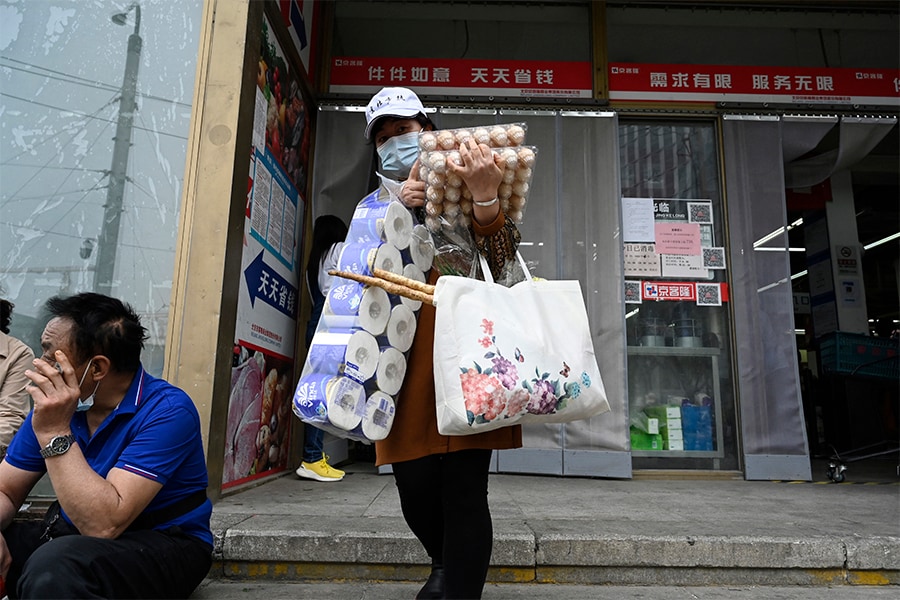
Beijing lockdown talks fuel supply chain disruption concerns
The city government ordered one of its districts to test all 3.5 million of its residents for coronavirus in the coming days, a move that may be a prelude to a larger lockdown in China's capital city
 Image: Jade Gao/ AFP
Image: Jade Gao/ AFP
The prospect of further lockdowns in China prompted a fresh wave of economic anxiety Monday as investors and companies whose supply chains run through China contemplated the effect of 70 new virus cases that the Beijing government said it had detected over the weekend.
The city government ordered one of its districts to test all 3.5 million of its residents for coronavirus in the coming days, a move that may be a prelude to a larger lockdown in China’s capital city. Shanghai, a major port and business center, has been locked down for roughly a month, part of China’s “zero COVID” strategy. Other Chinese cities both large and small have announced their own restrictions on the movement of residents in a bid to keep the virus from spreading.
The lockdowns present yet another challenge for global supply chains that have been stressed by pandemic shutdowns and the war in Ukraine, leading to greater competition for goods and higher prices that are fueling inflation worldwide.
While Chinese authorities have sought to keep factories and especially ports operating by keeping workers on the premises in so-called closed loop systems, the lockdowns have interrupted shipments and lengthened delivery times for many of the global companies that depend on Chinese factories.
Phil Levy, chief economist at Flexport, a freight forwarder, said in an email that although Beijing is an important city, “it is not at the heart of factory production or supply chain operations.” He said lockdowns there would have a more limited effect than previous restrictions in Shanghai and Guangdong, where ports continued to mostly operate.
©2019 New York Times News Service




